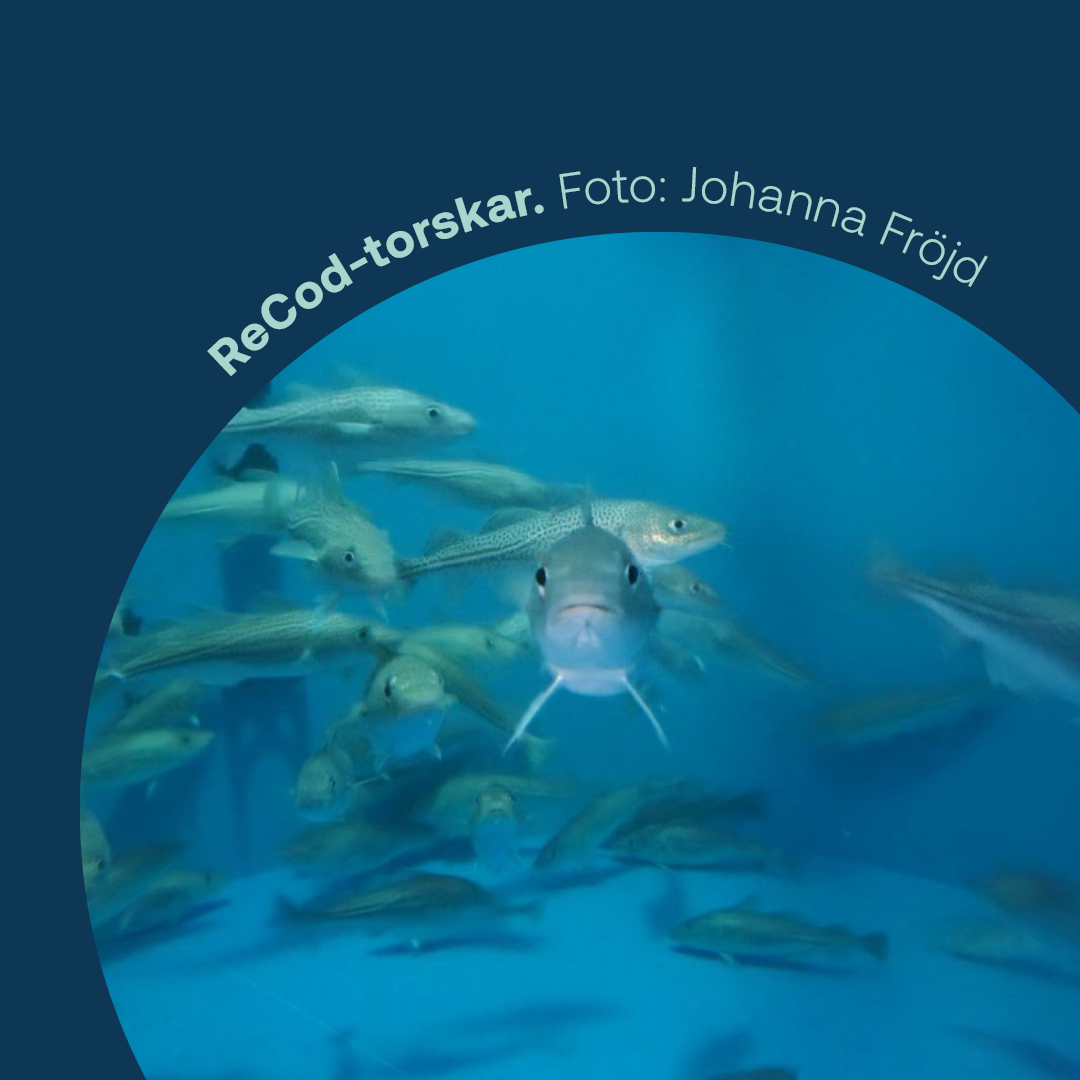If you’ve been following the project ReCod – release of small cod in the Baltic Sea, you know who Johanna Fröjd is – the foundation’s very own cod mum. After almost four years in the project, it’s time for new adventures. Or perhaps more like semi-new adventures. Johanna has started a PhD position at Stockholm University – to research Baltic cod. But before we let her go, we find out how a newly graduated biologist, who specialized in the social cognition of guppy fish, ends up at a small research station on northern Gotland to become an expert in keeping cod, getting them to spawn and hatching small cod larvae to release into the Baltic Sea.
For almost four years, Johanna has packed herself and her dog Mega into the small pickup truck and driven the hour-long journey from southern Gotland, where she lives, to northern Gotland, where the Ar research station is located. And she has done it both at night and during the day.
‘When I joined the ReCod project, my job was to get the station running smoothly, and it took quite a while to get it right. In the beginning, I was called out a lot, at all hours of the day and night, because the water systems alarms went off,’ says Johanna.
On the station, where adult Baltic cod are kept for spawning and eggs are incubated to hatch into cod larvae, closed systems, known as RAS, are used to recirculate the water. This gives full control over the removal of bacteria and contaminants, while the closed systems also allow salinity and temperature to be adjusted.
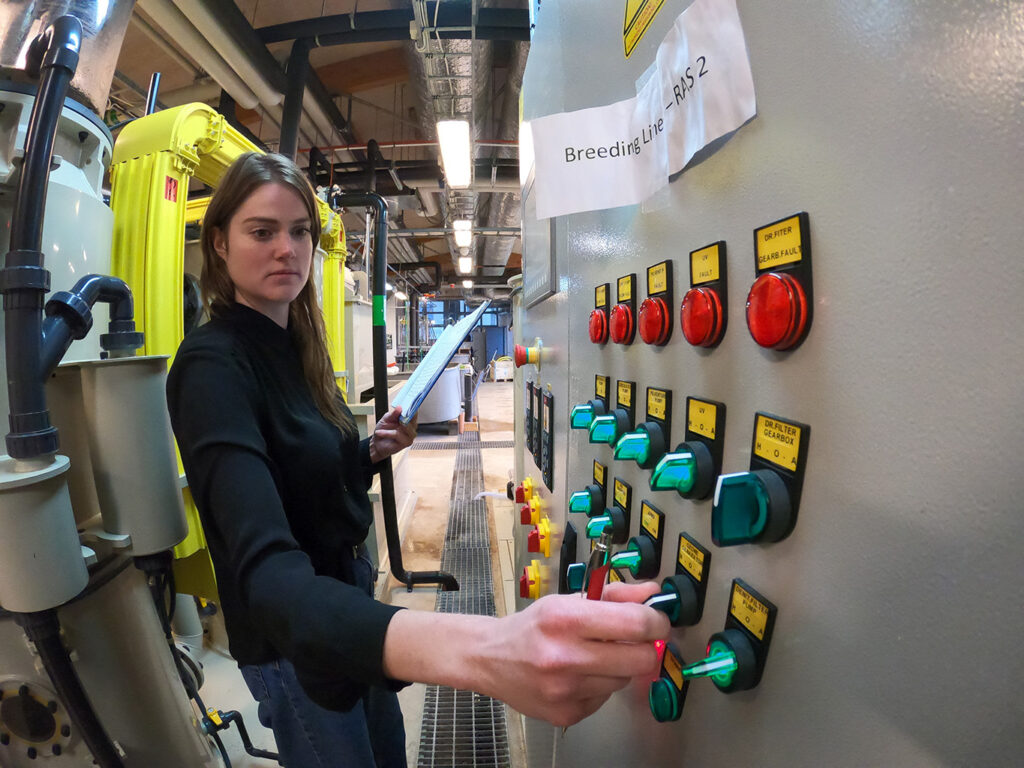
Johanna fine-tunes the settings on one of the station’s RASs. Photo: PA Berglund
‘It’s easy to think that ‘taking care of the cod’ means handling the fish in some way, but this is not true. The less you disturb the fish, the better off they are. Instead, it’s about good management so that the environment is as good as possible for the fish. Because these are living systems, bacteria live in the biofilter. If something goes wrong with the bacteria, the environment for the cod quickly becomes poor,’ says Johanna.
Getting Baltic cod to spawn naturally at the station has been a journey into unexplored territory where stable operation is a basic prerequisite. With both experience and many lessons learnt the hard way, the operation finally became stable.
‘I’ve made every mistake you could make in the beginning, but the beauty of it is that you correct them, learn from them and create routines so it doesn’t happen again,’ she says.
But how did Johanna end up here? A girl from Stockholm, a newly graduated biologist who wrote her thesis on guppy fish.
It was simply a coincidence.
‘I had just moved to Gotland and was working on a farm, looking after cows, until one day I heard that the ReCod project was looking for staff. You can’t miss an opportunity like that,’ says Johanna with a smile.
Because challenges are something she likes. And that is also what she takes with her after all the years in the project.
‘One thing I’ve really learnt is that everything is possible. There are no free lunches, it’s hard work that pays off – from everyone involved in the project,’ says Johanna.
She has done a lot herself, but not everything. It has been fantastic staff, both seasonal workers and colleagues who have worked longer, who have been crucial to ReCod becoming what it has become.
‘When the operation worked, I was more comfortable and staff were in place, it became possible to focus on research, international collaborations, knowledge development and to implement the project goals even better,’ says Johanna.
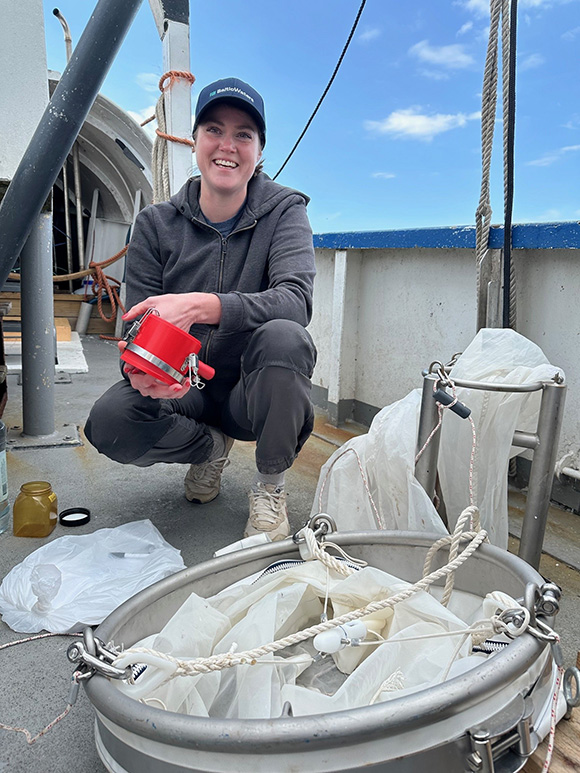
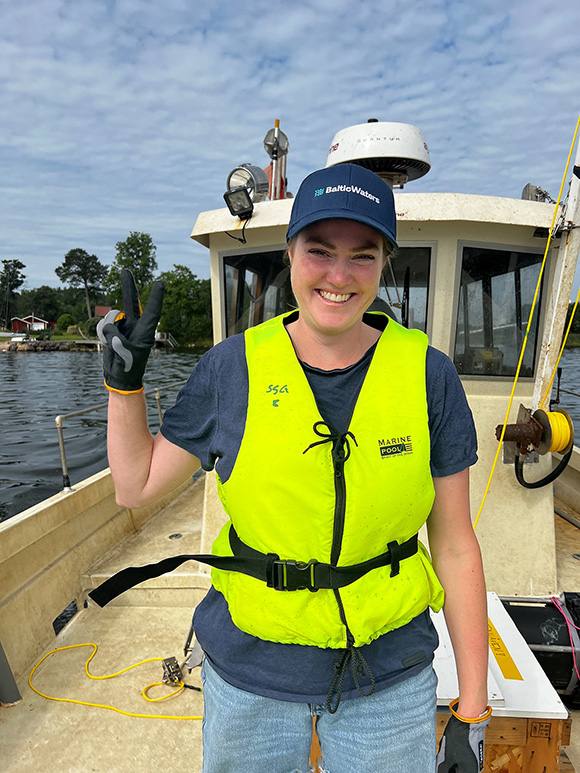
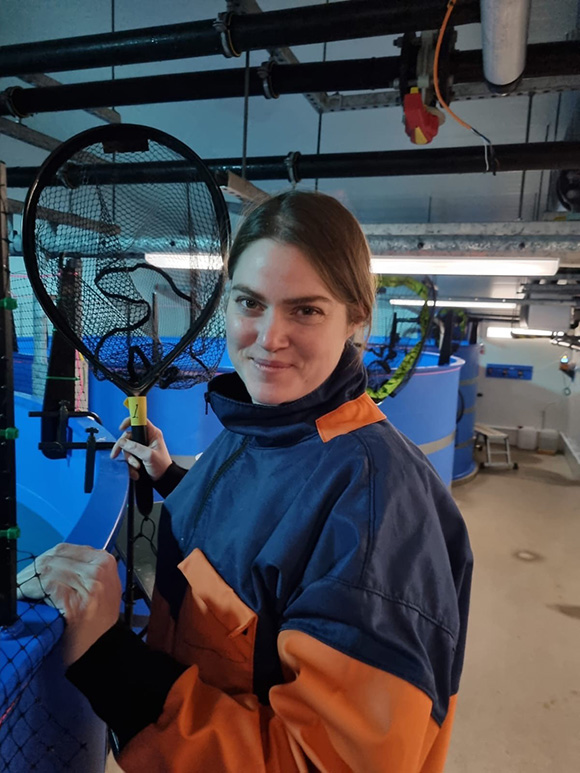
The role of ReCod project manager includes everything from plankton sampling, release of cod larvae and management of the parent fish. Photo: Madeleine Kullenbo and Konrad Stralka
A lot of research has come out of ReCod, and interest from other researchers and other countries has only increased. And more research results are waiting. There is a lot of interesting data that Johanna plans to publish, as soon as she gets a moment. The only question is when, because now that her time in the project is coming to an end, she will be focusing more on her PhD position at Stockholm University. In her work, she will use stable isotope analyses to investigate how stress factors affect the isotope composition of cod. Heavy isotopes accumulate through the food web, which helps determine where in the food web the species is located. Species high up in the food web have more heavy isotopes. But in the case of Baltic cod, this is not the case.
What are isotopes?
An element can have different numbers of neutrons, which means that there are different variants of an element, called isotopes. Heavy isotopes have more neutrons than protons
‘Until the 1990s, it was possible to read stable isotopes in Baltic cod to place it in the food web, which is high up because it is a top predator. But then something happened, today heavy isotopes do not accumulate in the Baltic cod in the same way. I will investigate whether the stress factors of lack of food and lack of oxygen affect the isotope composition of the fish,’ says Johanna.
The studies extend from the lab out into the field, where she will look at differences in isotope composition in cod at Gotland, in the Bornholm Deep and Åland Sea where, unlike in the rest of the Baltic Sea, there are stocks that are doing well.
‘The hope is to be able to contribute with new scientific data on the health of cod in the Baltic Sea, which is needed for better management,’ says Johanna.
Although Johanna is now handing over the baton to a new project manager, Ellen Scahgerström, and the project is moving to BalticWater’s new fish research laboratory outside Nyköping, she will continue to follow ReCod.
‘So far, ReCod has largely been a method development project. In the next step, the larvae will be reared as fry before being released into the Baltic Sea, which reduces their natural mortality and the chance of them growing into large fish should be significantly greater,’ says Johanna.
Because life as a small cod larvae in the sea is tough. The natural mortality rate is over 99 per cent. If the cod are released as small fry, the conditions for survival are much better.
But there is much to be proud of during the first four years of the project.
‘Interest in releases has increased, as has interest in Baltic cod. The project focuses on the important issue of the situation of cod in the Baltic Sea.”
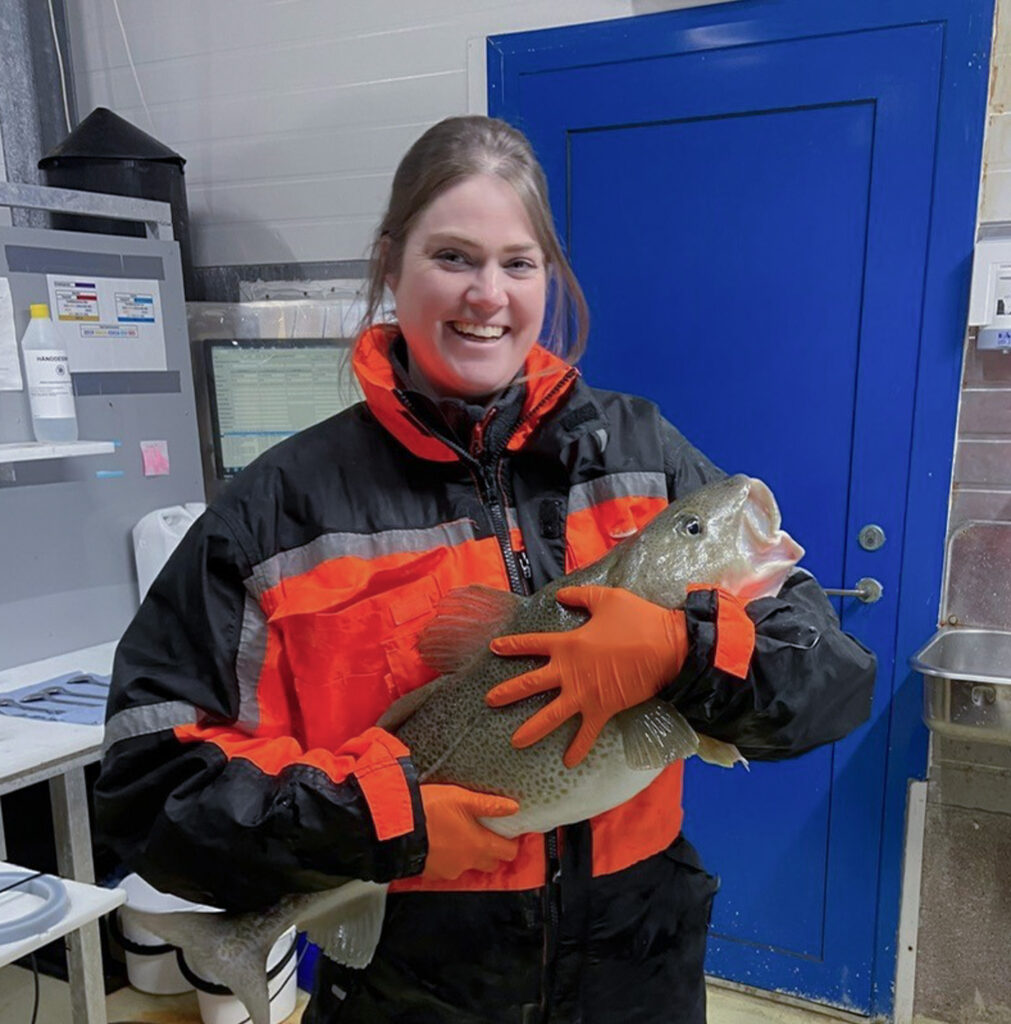
Johanna with a cod during a visit to the Nofima research station in Tromsø.
At the same time, new knowledge has emerged from ReCod, which was not part of the initial objectives.
‘We have been able to show, on a scientific basis, that Baltic cod can grow if the conditions are right. The cod that have lived and spawned within the project have grown considerably during their time at the station. At the same time, we know from research trial fishings that there are cod in the Baltic Sea. They are small, but there, so there is something to recover from. There is hope! And that is the most important thing,’ says Johanna.
My last question to Johanna is whether she will still feel like a cod mum. But that question feels unnecessary to ask. Because the answer seems pretty obvious.

About ReCod
ReCod – release of small cod in the Baltic Sea is one of BalticWaters’ largest and longest projects, which started in 2020 and is planned to last until 2034 and is divided into three stages.
In 2020 – 2024, stage 1 was carried out at the Ar research station on Gotland – in the middle of the Baltic Sea. The goal of stage 1 is to conduct trials with releases of 4–6-day old cod larvae at a few locations along the east coast where we investigate whether the larvae survive and manage to establish themselves. If the trials are successful, there is the possibility of re-establishing cod in the Baltic Sea in more places, which increases the chances of preserving and protecting the unique eastern stock. In total, almost 1,000 cod have lived at the station, and together they have produced almost 2,500,000 cod larvae that have been released into the Baltic Sea.
ReCod stages 2 and 3 will be operated at BalticWaters new fish research laboratory from 2025. Cod larvae will be reared to 30 days, and then to larger fish, for release and research. The aim is to find the best age and size for release to increase the chance for survival in the wild. ReCod is implemented and funded by BalticWaters, with support from Uppsala University and other partners.
